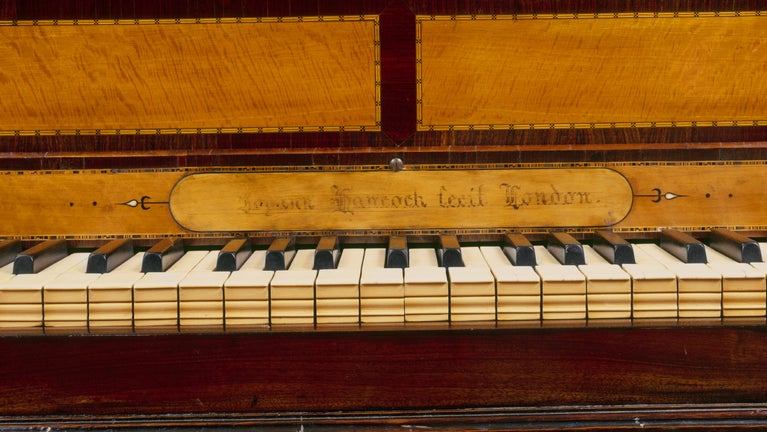Listen to music at Fenton House

Jump to
Step back in time as you listen to historic instruments being played by our musicians, with the oldest dating back to 1540. Find out more about this unusual collection when you visit Fenton House.
Experience the sound of early music
As you explore the rooms of Fenton House you will hear harpsichords, spinets, virginals and clavichords being played by our volunteer musicians. Our friendly reception team can tell you what time our musicians will be playing, or give you more information.
Our dedicated volunteer musicians play the instruments whilst we are open, and are happy to answer questions about the differences between the instruments and the music they are playing. It's a great opportunity to learn about how a plucked-string keyboard instruments works and why, for example, it is so different from the piano.
The musicians move around the house, spending time on different instruments, giving you a chance to compare the sound of a virginals to a spinet; or decide which harpsichord strikes a chord with you.
An unusual collection of historic instruments
Major Benton Fletcher gifted the National Trust his collection of early keyboard instruments in 1937. Benton Fletcher was passionate about early music and about it being played on the original instruments for which it was written. With a background in social work, he saw the National Trust as a long term home for his rare musical instruments.
Major Benton Fletcher was also aware of the costs that would be incurred to upkeep the instruments so he left the Trust funds to help keep the instruments in playing condition. Most are tuned, adjusted, and conserved weekly, which makes the instruments some of the most accessible historical keyboard instruments in the UK.
If you would like to contribute to the costs of keeping these instruments playable for future generations then please make a donation via the website to Fenton House.

The story of the instruments
Our keyboard instruments date between 1540 to 1925 and some have unusual stories behind them. Benton Fletcher found his first acquisition ‘hidden under a couple of heavy armchairs in a second-hand shop' in Wells, Somerset. Another he found in an outhouse in Wales, and one he saved from being used as a carpenter's workbench in a Florence basement. Benton Fletcher had to have many of the instruments restored and his commitment to reviving early music has left an important lasting legacy for all of us.
Interestingly, the provenance of many of the instruments is open to debate. Benton Fletcher himself was sceptical of some of the claimed attributions and the true provenance of some instruments remains unknown to this day.
Things to see and do at Fenton House
Explore Fenton House, one of London’s hidden treasures, a 17th-century house with vibrant ceramics, early keyboard instruments and intricate needlework.

Explore the garden at Fenton House
Discover formal lawns, herbaceous borders, exotic planting, a sunken rose garden, kitchen garden and a 300-year-old orchard in Fenton’s garden: a haven in the middle of Hampstead.
